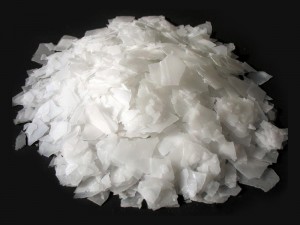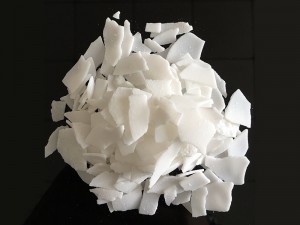Para-tert-octyl-phenol CAS No. 140-66-9
Product description
English name: Para-tert-octyl-phenol
Abbreviation: PTOP/POP
B. Molecular formula
Molecular formula: C14H22O
Molecular weight: 206.32
C. Relevant coding:
UN code: 3077
CA registration number: 140-66-9
Customs Code: 2907139000
chemical composition
| project | metric |
| surface | White sheet solid |
| P-teusl phenol mass fraction | 97.50% |
| freezing point ≥ | 81℃ |
| Shuifen ≤ | 0.10% |
Storage and Transportation conditions
Store in a cool, dry, dark warehouse, away from all fire and heat sources. The warehouse temperature should not exceed 40℃. Keep the packaging sealed. It should be stored separately from oxidizer, strong alkali and edible chemicals, and should not be mixed. Use explosion-proof lighting facilities.
Toxicity and Protection
Corrosive to skin, eyes and mucous membranes, can cause congestion, pain, burning sensation, blurred vision. Inhaling its vapor in large quantities can cause coughing, shortness of breath, dyspnea, and in severe cases, pulmonary edema. Poisoning can occur if taken by mistake. Frequent contact with the skin can decolorize the skin. In case of thermal decomposition, highly toxic phenolic smoke is released. Environmental hazards: The substance is harmful to the environment, special attention should be paid to the pollution of water bodies. Hazard of ignition and explosion: combustion caused by open flame and high heat energy. Closed operation to enhance ventilation. Operators must be specially trained and strictly abide by operating procedures. It is recommended that operators wear gas masks, chemical protective glasses, impermeable overalls, and rubber oil-resistant gloves. Keep away from fire. No smoking in the workplace. Use explosion-proof ventilation systems and equipment. Prevent its vapor from leaking into the workplace air. Production and packaging sites shall be equipped with fire prevention equipment of appropriate variety and quantity, as well as emergency leakage treatment equipment.
Properties
Physical properties:
The normal state of p-teroctyl phenol is a white flake solid, insoluble in water, soluble in most organic solvents, and will burn quickly in case of fire.
Chemical properties:
P-teroctyl phenol reacts with phenol, replacing the hydroxyl group on the benzene ring. There is no harm when polymerization occurs.
Biological activity
4-tert-octylphenol is an endocrine disruptor and an estrogen drug. 4-tert-octylphenol induced apoptosis of progenitor cells in offspring mice. 4-tert-octylphenol reduces bromodeoxyuridine (BrdU), mitotic marker Ki67, and phosphorylated histone H3 (p-histone H3), resulting in decreased proliferation of neural progenitor cells. 4-tert-octylphenol interferes with brain development and behavior in mice.
Main uses:
Uses: Widely used in the manufacture of oil-soluble phenolic resin, surfactants, adhesives and other uses; Widely used in the manufacture of oil soluble octylphenolic resins, surfactants, pharmaceuticals, pesticides, additives, adhesives and ink fixing agents. Used in printing ink, coating and other production fields.
P-teroctyl phenol is a raw material and intermediate of fine chemical industry, such as the synthesis of octyl phenol formaldehyde resin, widely used in oil additives, ink, cable insulation materials, printing ink, paint, adhesive, light stabilizer and other production fields. Synthesis of non - ionic surfactant, widely used in detergent, pesticide emulsifier, textile dye and other products. Synthetic rubber auxiliaries are indispensable for the production of radial tires.
Leakage emergency treatment
Emergency treatment:
The contaminated area should be isolated, warning signs should be set up around it, and emergency personnel should wear gas masks and chemical protective suits. Do not contact the leakage directly, scrub with the emulsion made of non-combustible dispersant, or absorb with sand, pour to the open place deep buried. The contaminated ground is scrubbed with soap or detergent, and the diluted sewage is put into the waste water system. Such as a large amount of leakage, collection and recycling or harmless disposal after waste.
Operational disposal and storage
Operation precautions:
Closed operation to provide adequate local exhaust air. Prevent dust release into the workshop air. Operators must be specially trained and strictly abide by operating procedures. It is recommended that operators wear dust masks (full covers), acid and alkali resistant rubber suits, and acid and alkali resistant rubber gloves. Keep away from fire, heat source, no smoking in the workplace. Use explosion-proof ventilation systems and equipment. Avoid producing dust. Avoid contact with oxidants and alkalis. Equipped with the corresponding variety and quantity of fire equipment and leakage emergency treatment equipment. An empty container may contain harmful residue.
Storage precautions:
Store in a dry, clean and ventilated room. Keep away from fire and heat. Keep out of direct sunlight. The package is sealed. It should be stored separately from oxidant and alkali, and should not be mixed. Equipped with the corresponding variety and quantity of fire equipment. The storage area should be equipped with suitable materials to contain leaks.
[Packing, Storage and transportation] The products are packed in woven bags or cardboard drums lined with plastic bags, each bag weighing 25 kg net. Keep away from strong oxidants, strong acids, anhydrides and food, and avoid mixed transportation. The storage period is one year. Transport according to combustible and toxic chemicals management.







